overleaf template galleryLaTeX templates and examples — Recent
Discover LaTeX templates and examples to help with everything from writing a journal article to using a specific LaTeX package.

This thesis/dissertation template is created for the graduate students of Khalifa University, following the Graduate Office requirements. It allows an easy switch between PhD Dissertation and MSc Thesis and between the final version and thesis/dissertation proposal. The standard declaration and copyrights texts are hidden in the class file. Other instructions can be found in the template file.

Se pretende describir el decaimiento de una partícula α encontrando los niveles de energía Eα correspondientes a los estados ligados de la partícula producto de la desintegración. Los niveles de energía y los estados ligados se encuentran mediante dos métodos de aproximación: WKB y diferencias finitas. Posteriormente se halla el tiempo de vida medio τ, se comparan los resultados con los de la literatura y se decide el mejor método de solución acorde con la literatura.
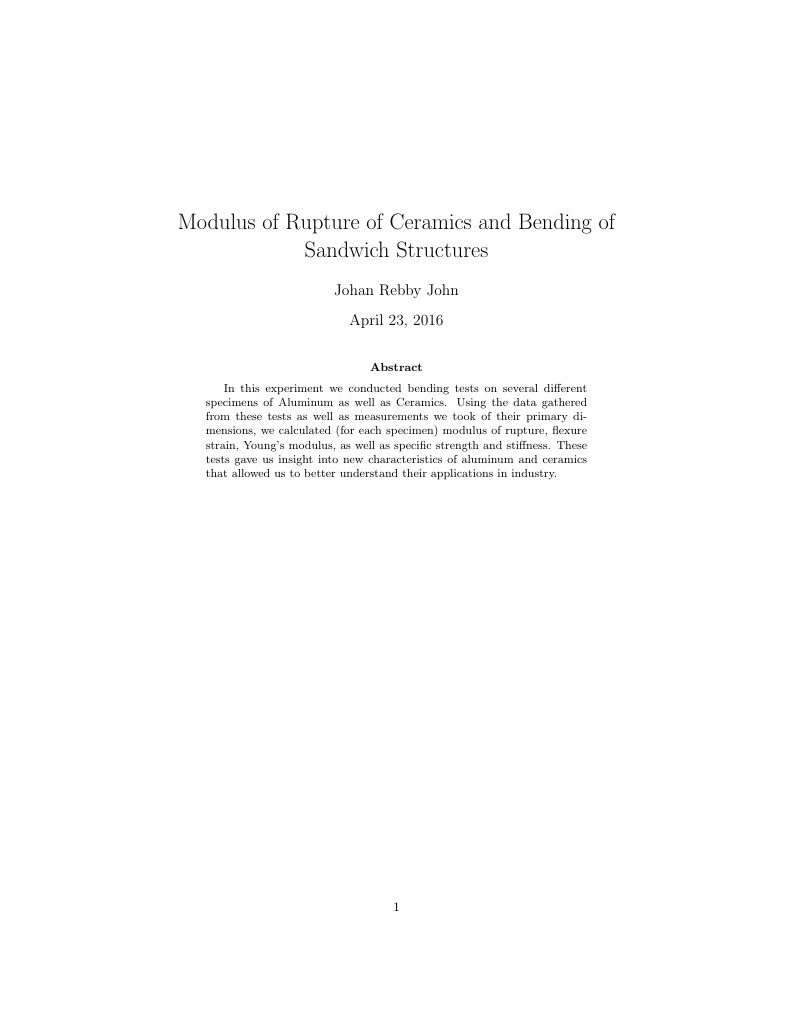
In this experiment we conducted bending tests on several different specimens of Aluminum as well as Ceramics. Using the data gathered from these tests as well as measurements we took of their primary dimensions, we calculated (for each specimen) modulus of rupture, flexure strain, Young's modulus, as well as specific strength and stiffness. These tests gave us insight into new characteristics of aluminum and ceramics that allowed us to better understand their applications in industry.
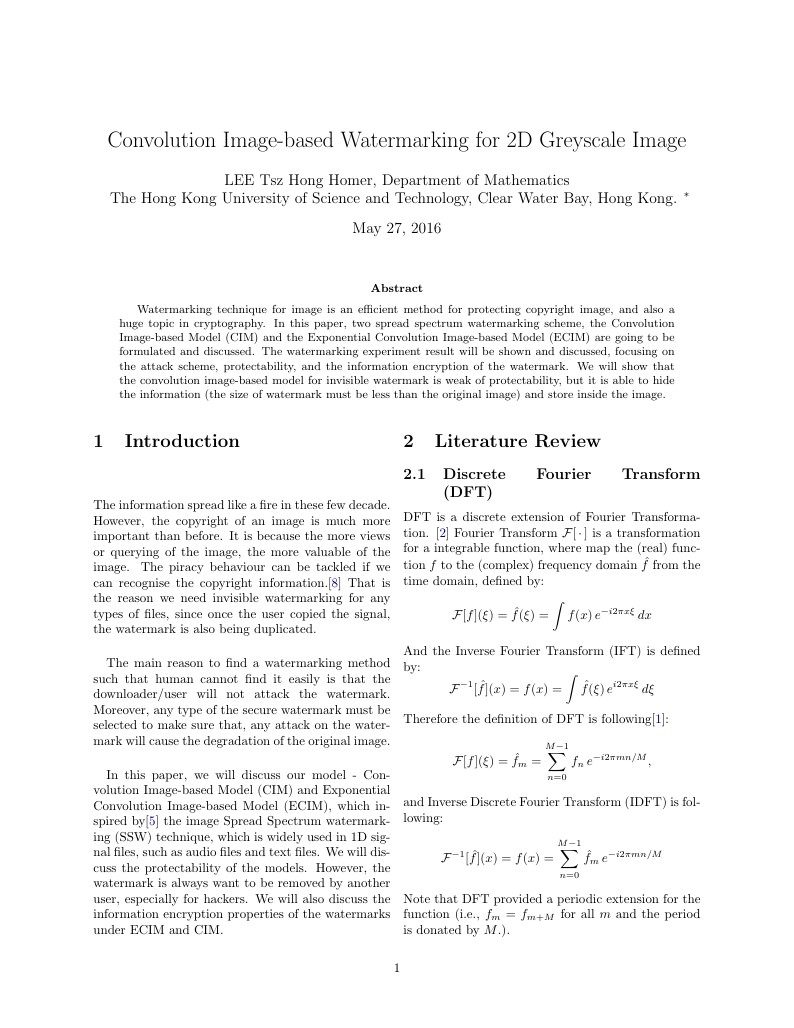
Watermarking technique for the image is an efficient method for protecting copyright image, and also a huge topic in cryptography. In this paper, two spread spectrum watermarking scheme, the Convolution Image-based Model (CIM) and the Exponential Convolution Image-based Model (ECIM) are going to be formulated and discussed. The watermarking experiment result will be shown and discussed, focusing on the attack scheme, protectability, and the information encryption of the watermark. We will show that the convolution image-based model for invisible watermark is weak of protectability, but it is able to hide the information (the size of watermark must be less than the original image) and store inside the image.
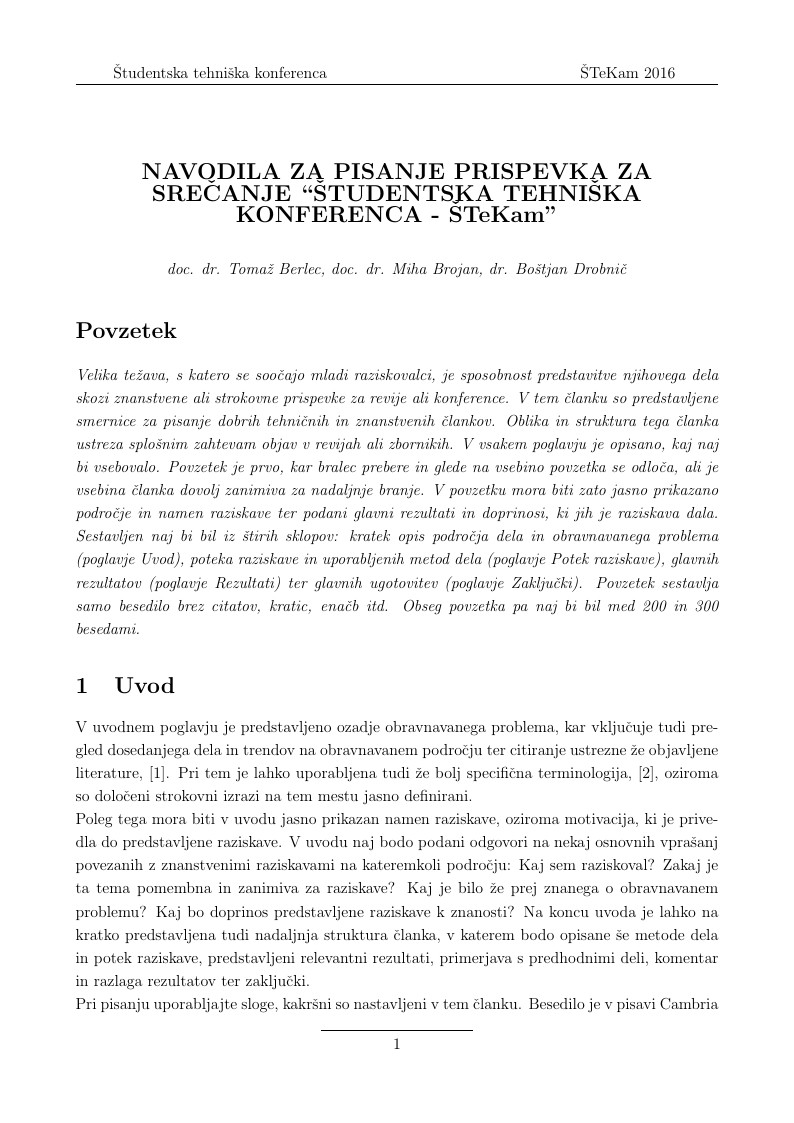
Fakulteta za strojništvo Univerze v Ljubljani organizira študentsko tehniško konferenco ŠTeKam. Namenjena je vsem študentom različnih smeri dodiplomskega in podiplomskega študija, ki želijo javnosti predstaviti svoja raziskovalna dela. To je predloga za oddajo prispevka.
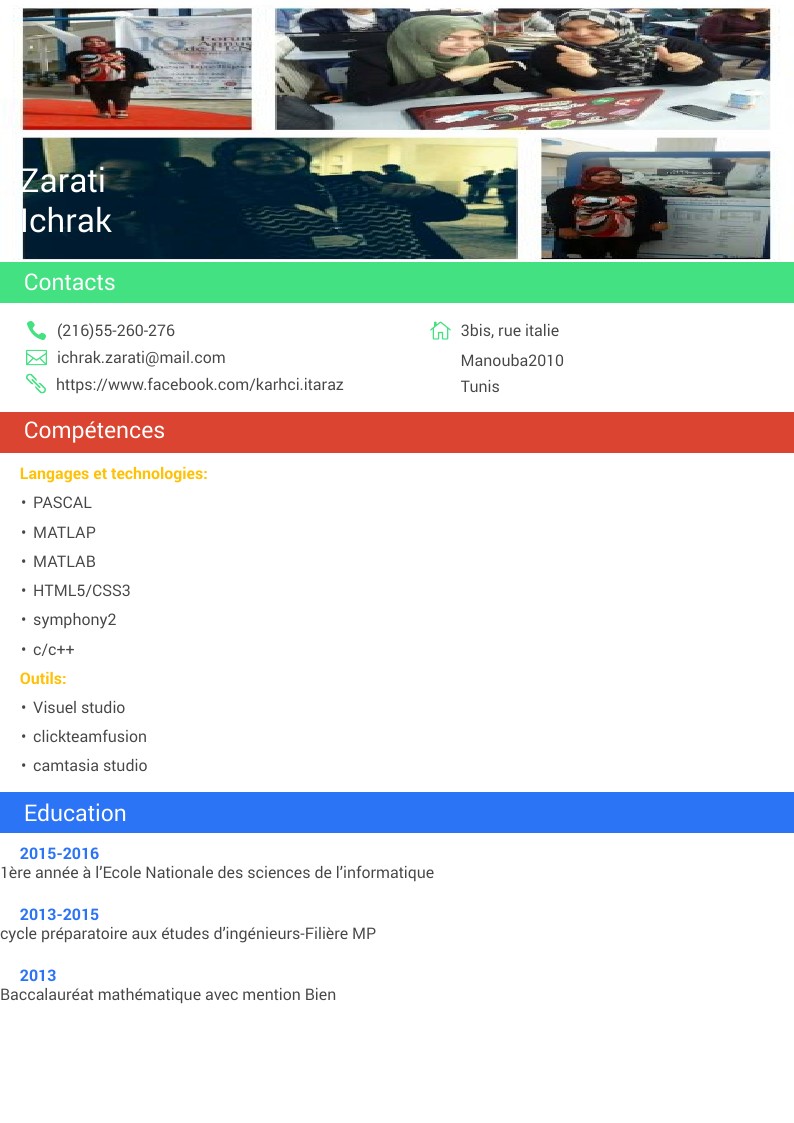
Zarati Ichrak's CV

Mock AMC questions
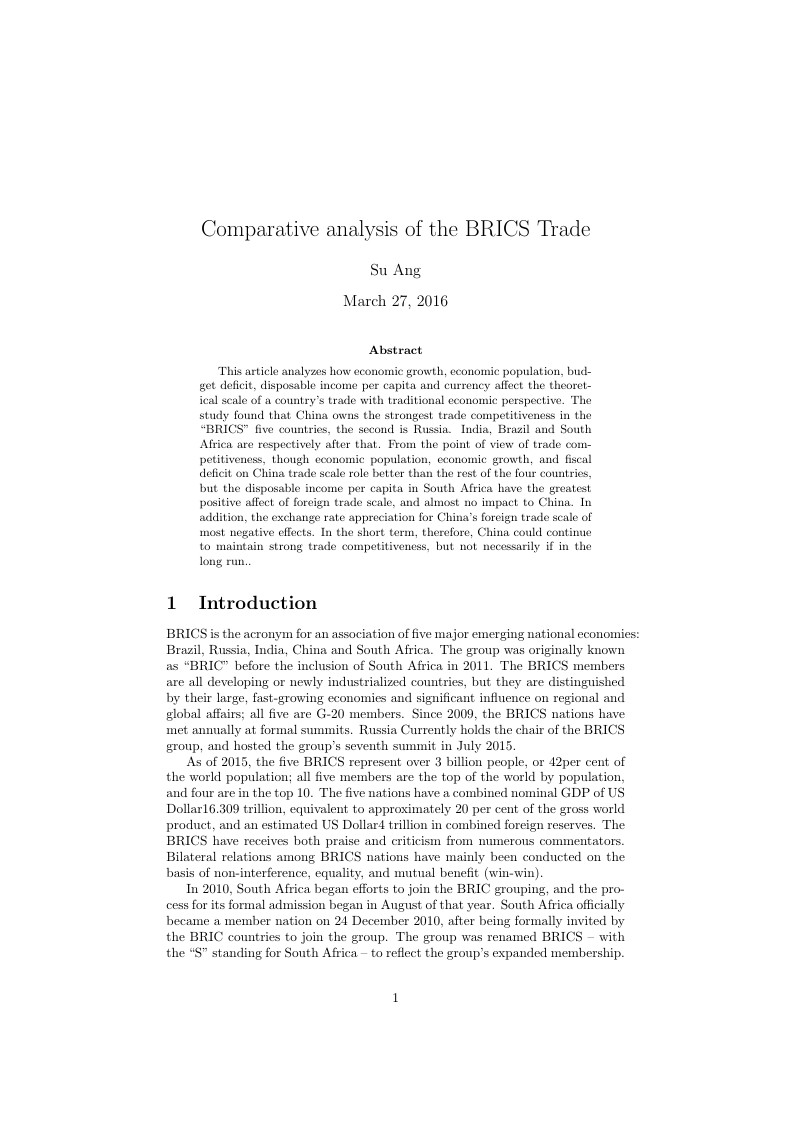
This article analyzes how economic growth, economic population, budget deficit, disposable income per capita and currency affect the theoretical scale of a country’s trade with traditional economic perspective. The study found that China owns the strongest trade competitiveness in the “BRICS” five countries, the second is Russia. India, Brazil and South Africa are respectively after that. From the point of view of trade competitiveness, though economic population, economic growth, and fiscal deficit on China trade scale role better than the rest of the four countries, but the disposable income per capita in South Africa have the greatest positive affect of foreign trade scale, and almost no impact to China. In addition, the exchange rate appreciation for China's foreign trade scale of most negative effects. In the short term, therefore, China could continue to maintain strong trade competitiveness, but not necessarily if in the long run.
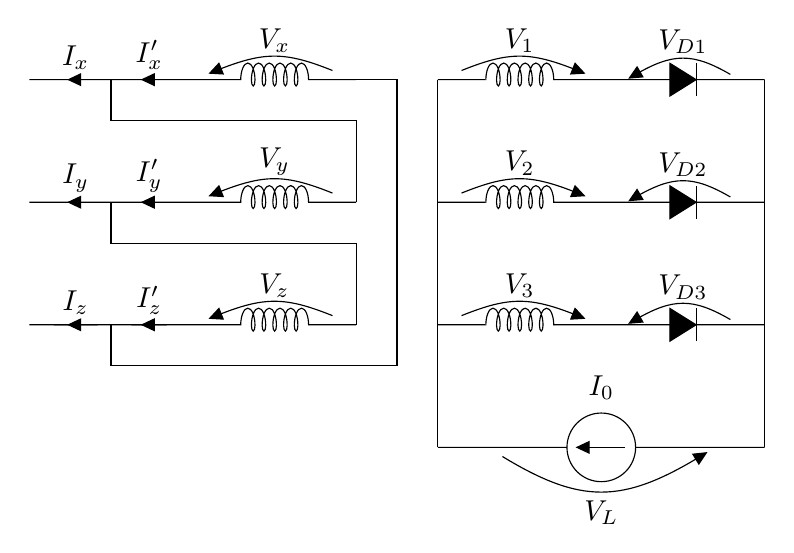
Transformador de potencia
\begin
Discover why over 20 million people worldwide trust Overleaf with their work.